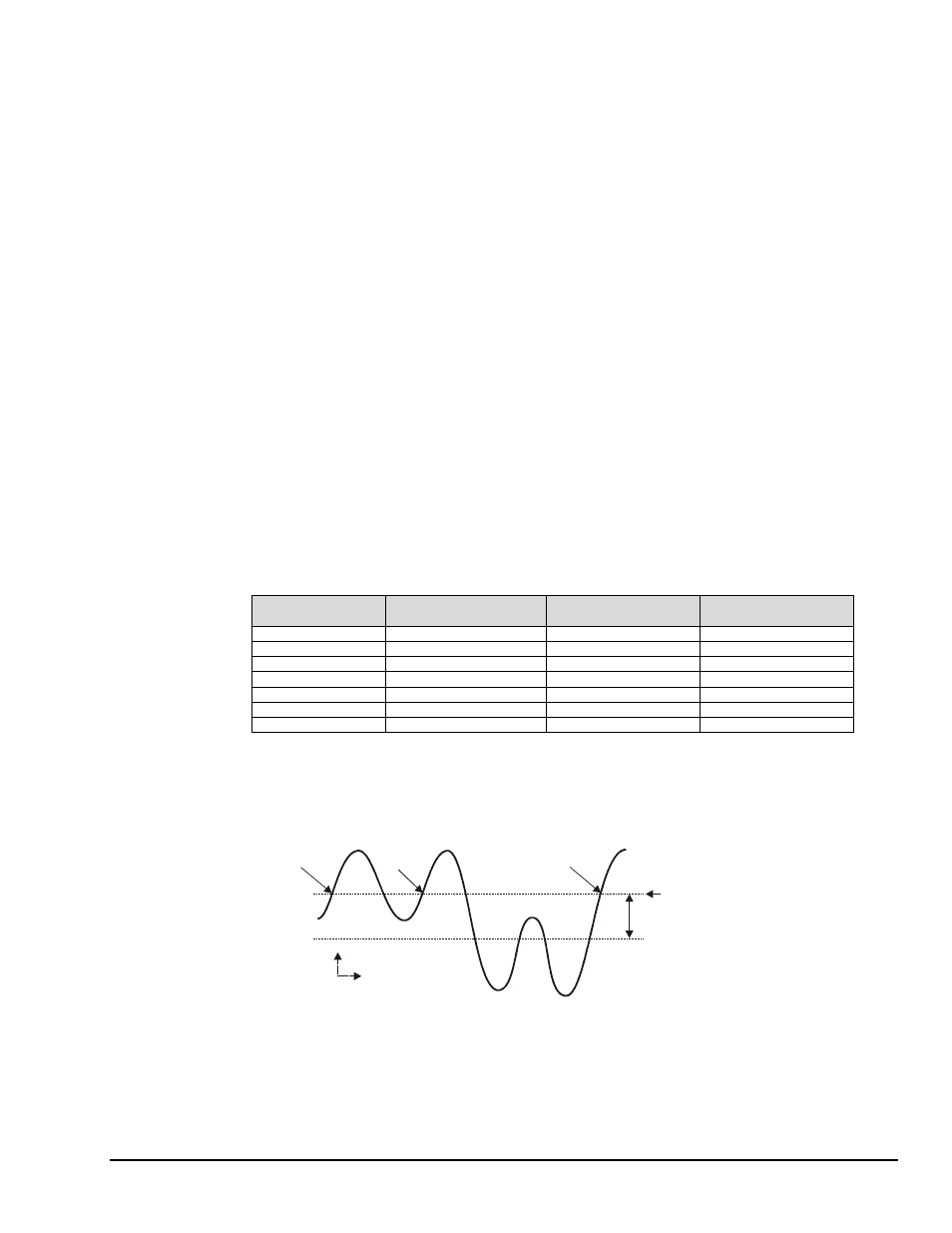Digital trigger & single-channel trigger, Hysteresis, Igger…… 8-11 – Measurement Computing WaveBook rev.3.0 User Manual
Page 145

WaveBook User’s Manual.
6-24-99
Theory of Operation 8-11
Digital Trigger & Single-Channel Trigger
The input of the digital (TTL) trigger and the output of the single-channel signal-comparator are each
connected directly to hardware circuits to provide low-latency triggering. WaveBook can respond to a TTL
or analog trigger with a jitter (or uncertainty in latency) of no more than 100 nanoseconds (ns).
• If not collecting pre-trigger data, WaveBook responds to the trigger with a latency of less than 200 ns
for TTL and 300 ns for analog.
• If collecting pre-trigger data, then triggers are not acted upon until the end of the current pre-trigger
scan. This increases the trigger latency and jitter, but preserves the specified scan rates.
When using the single-channel trigger, the Channel 1 analog input signal is compared with a programmable
voltage level to generate an internal TTL signal that is true if the analog input is greater than the
programmable voltage level (false if less).
When the digital trigger is used, then the TTL trigger signal from the digital I/O connector is used directly.
The resulting TTL signal is examined under program control for either a false-to-true (rising edge) or true-
to-false (falling edge) transition which, when it occurs, is the trigger event.
If the system is ready for a trigger, then the trigger event will be acted upon. If the system is not ready (due
to incomplete configuration or because it is still finishing the previous trigger's action), the trigger will be
ignored. No indication of an ignored trigger is given.
The low-latency analog trigger compares the analog signal with a programmable voltage source. The
effective range of this voltage source depends on whether or not the WBK11 SSH option is installed.
• Without SSH, the trigger threshold is settable from -5.0 to +9.996 volts with 12-bit (WaveBook/512)
resolution, regardless of any channel's gain settings. This gives better than 1% resolution at even the
smallest input ranges (such as 0-1 or ±0.5 volts).
• With SSH, the single-channel (Channel 1 analog) signal is first amplified by the SSH programmable
gain amplifier before being compared with the programmable voltage. This allows precise trigger-level
adjustment, even at high gain. The analog-trigger comparator threshold-voltage range and resolution
(with SSH) are shown in the following table.
SSH Input Range
Trigger Threshold
Range
WaveBook/512
12-Bit Resolution (mV)
WaveBook/516
16-Bit Resolution (mV)
0-10 or ±5
-5.0 to 9.996
3.66
0.299
0-5 or ±2.5
-2.5 to 4.998
1.83
0.114
0-2 or ±1
-1.0 to 1.999
0.732
0.0458
0-1 or ±0.5
-0.5 to 0.9996
0.366
0.0229
0-0.5 or ±0.25
-0.25 to 0.4998
0.183
0.0114
0-0.2 or ±0.1
-0.10 to 0.1999
0.0732
0.00458
0-0.1 or ±0.05
-0.05 to 0.09996
0.0366
0.00229
Hysteresis
The analog trigger circuit has hysteresis that reduces the occurrence of retriggering due to input noise.
The hysteresis level without SSH is 25 mV; the hysteresis with SSH is 1/600 of the comparator range. The
next figure shows the hysteresis effect for a rising-edge trigger.
Trigger
Trigger
No
Trigger
Trigger Level
Hysteresis Range
Hysteresis Effect on a Rising-Edge Trigger
Amplitude
Time
A trigger will occur when the analog input rises above the trigger level—but only after the input level has
been below the hysteresis range. If the level momentarily drops just below the trigger level (perhaps due to
noise) and then rises above it again, no extra triggers will be generated—the signal did not drop below the
hysteresis range. After the level drops below hysteresis, it can then again produce a trigger by rising above
the trigger level.
